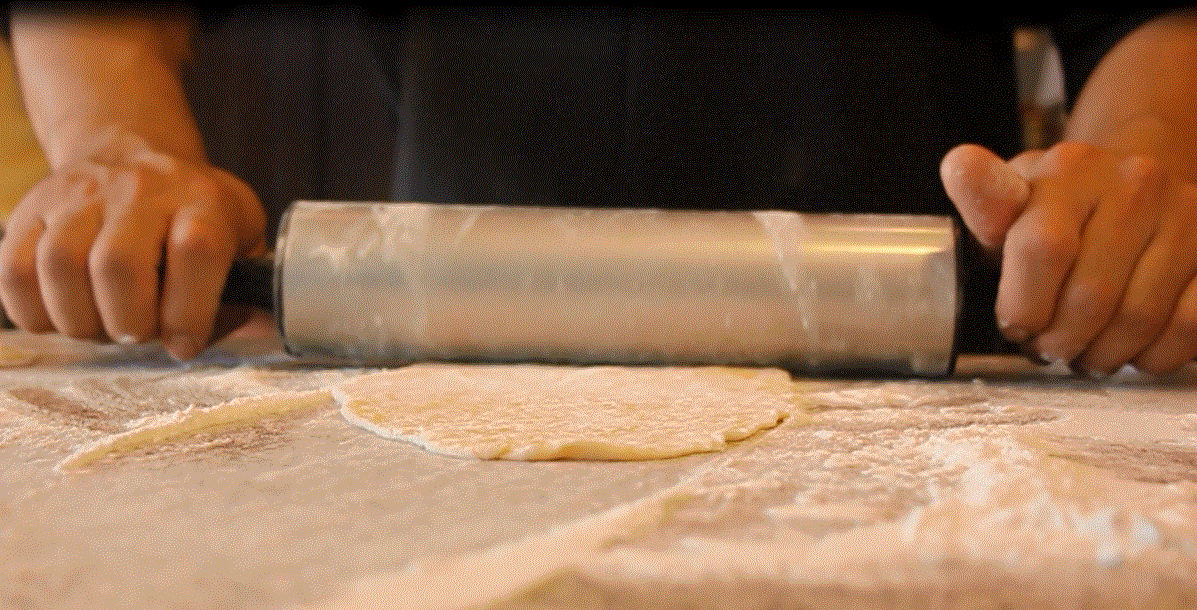Rolling pin: is a cylindrical food preparation utensil used to shape and flatten dough/
TIPS FOR ROLLING PINS:Nothing gets pie dough from the counter to a pie plate faster than a rolling pin.Change Your Pin
Do you fret over the way your pastry or chapati never comes out quite right–either too tough or too tender? Maybe you need to change your rolling pin.
Size Matters
The bigger the pie or pizza, the longer your rolling pin needs to be. Basically, make sure it is always longer than the area to be covered by the rolled-out dough.
A big diameter means fewer revolutions, but some cooks prefer a thinner pin as it allows more control.
A pin with handles makes light work of heavy dough. A 28-30cm barrel is the most useful size.
Your rolling pin should be hefty enough to do its job without too much pressure from you.
More Pin Tips
Always dust your pin with flour to prevent sticking and make sure you scrape off any bits of stuck-on pastry while working to avoid lumpy pastry. One trick: don’t use too much flour when you are rolling dough.
Wooden pins should be scrubbed clean then dried after use to prevent warping and cracking. Non-wooden pins are usually dishwasher-proof, but check the manufacturer’s instructions first.
HOW TO USE IT:
1. Lightly sprinkle a surface with flour and place the pastry dough on top. Dust with additional flour. Coat the rolling pin with flour to prevent it from sticking to the dough.
2. Hold the rolling pin in your dominant hand and firmly hit the surface of the dough until it is evenly flattened.
3. Dust additional flour on top of and below the dough. Place one hand on each end of the rolling pin. Press the middle part of the pin into the center of the dough. Push down and roll forward to the edge in a single motion. Repeat this process, rolling out to the other edges of the dough. Rotate the dough in a quarter turn and continue rolling, always starting from the center and rolling outwards.
4. An Italian rolling pin is heavier than the French rolling pin, and will flatten the dough more quickly. To use the Italian rolling pin, place your hands flat on either end of the pin, keeping the fingers flexed. Roll the pin underneath your hands and across the dough. Continue to sprinkle the work surface with flour as needed.
5. A French rolling pin is often the better tool to use when rounding out the dough. Place one hand flat on top of the pin, anchoring it down on top of the dough. Use the other hand to roll the pin in a circular motion, creating a rounder and fuller shape.
6. Continue rolling until the dough is completely flat. Periodically lift and flip the dough, adding more flour to the work surface to prevent any sticking or tearing.


